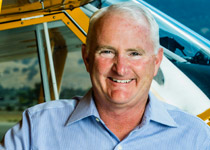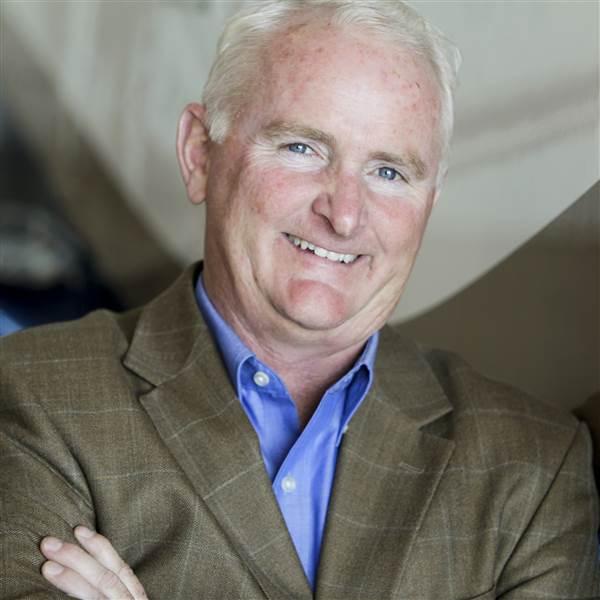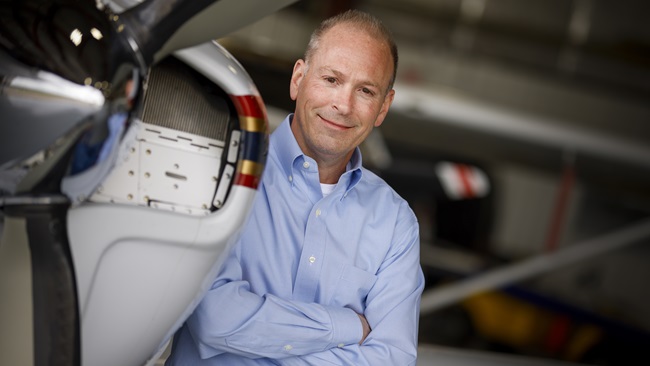 Any time you start something new, there’s a lot to learn. And I’m a big believer in learning first, then acting decisively. In my first months at AOPA, I spent my time doing what I call “seeking to understand.” I looked into everything. I asked a lot of questions. And I listened carefully to the answers. To do the work of AOPA, and do it well, I need to understand what matters to four key groups of people: our members, our government decision makers, our aviation community, and our own staff—the people who get the job done day in and day out.
Any time you start something new, there’s a lot to learn. And I’m a big believer in learning first, then acting decisively. In my first months at AOPA, I spent my time doing what I call “seeking to understand.” I looked into everything. I asked a lot of questions. And I listened carefully to the answers. To do the work of AOPA, and do it well, I need to understand what matters to four key groups of people: our members, our government decision makers, our aviation community, and our own staff—the people who get the job done day in and day out.
I had the chance to talk to hundreds of members at AOPA’s Aviation Summit and during the town halls we hosted in Denver and Atlanta. I met hundreds more members and nonmembers alike at events such as NBAA’s convention in Las Vegas, the Kansas Aviation Expo, a seaplane splash-in at Virginia’s Lake Gaston, a pancake breakfast at Mecklenburg Brunswick Airport in Virginia, and a gathering of Beechcraft enthusiasts in Tullahoma, Tennessee. You asked a lot of questions—although I did get in a few of my own—and it was clear that you have strong opinions about what your association should be doing to protect and promote GA.
I also spent my first months meeting with elected and appointed leaders who make decisions that affect GA. Among them were the FAA administrator and more than a dozen senators and congressmen. The legislators I met play important roles in the GA caucuses. These are the leaders who support GA, oversee our national transportation network, and decide how federal dollars for aviation get spent—a good group to know.
Then there are the leaders of other GA organizations, including EAA, GAMA, NATA, NBAA, and more, including past AOPA presidents Craig Fuller and Phil Boyer. Plus there are aviation business leaders and influential individuals who are dedicated to making GA better. I listened to their insights and perspectives. I also spoke with reporters from all the major general aviation media. It’s their job to ask questions, of course, but the types of questions they asked gave me real insight into what they believe is important to pilots. I took it all in and I learned a lot. The first and most important thing I learned is simple but powerful: If you fly, you can’t afford not to be an AOPA member. Our members have high expectations—and AOPA can and must deliver. The way to do that is to align our resources with our objectives—make sure we’re putting our people and our funds where they do the most to support our mission. All of which led me to make some early decisions. The first you already know about—the decision to end AOPA’s Summit in favor of regional events, so we can reach more pilots where they fly. Since making that announcement the number one question I’ve been asked is, “Will you bring back the Frederick Fly-In at headquarters?” Yes! We’re working out the details now, and we’ll let you know more in the next few weeks.
We also need to do more to make our advocacy operation pilot-centric. That means getting our staff from headquarters into Washington, D.C., more often so our legislative and government affairs teams can work together seamlessly. It also means putting our subject-matter experts—the pilots who know and understand the issues at the most granular level—in front of Congress and other decision makers more often. It meant making some internal changes to the way those departments are structured and staffed.
Then there’s the long-term challenge of growing the pilot population. This is a big issue for everyone who cares about GA, and I am determined to make a difference. I made the decision to concentrate our resources on programs that deliver tangible results, such as expanding the network of flying clubs. We will also collaborate with other organizations that have great programs of their own, like EAA’s Young Eagles.
And finally, I decided that we need to get back to our roots and focus on the things pilots want and need us to do. Next year, AOPA will celebrate 75 years. That’s no small achievement, considering that aviation has been around for only about 100 years. When I came on board at AOPA, I had the privilege of visiting Wings Field, the airport where AOPA was founded, with one of our longest-serving board members, Paul Heintz. I was genuinely awed to see the table where a handful of pilots turned their love of flying into an organization that has protected GA for three-quarters of a century.
I am absolutely committed to staying true to the mission set out by our founders in 1939. The world has changed in the past 75 years and, with the exponential growth of information and technology, it will change far more in the next 75. But as long as people dream of flying, AOPA will be around to protect and promote GA—not only for ourselves but for the countless generations of pilots yet to come.
Email [email protected]



